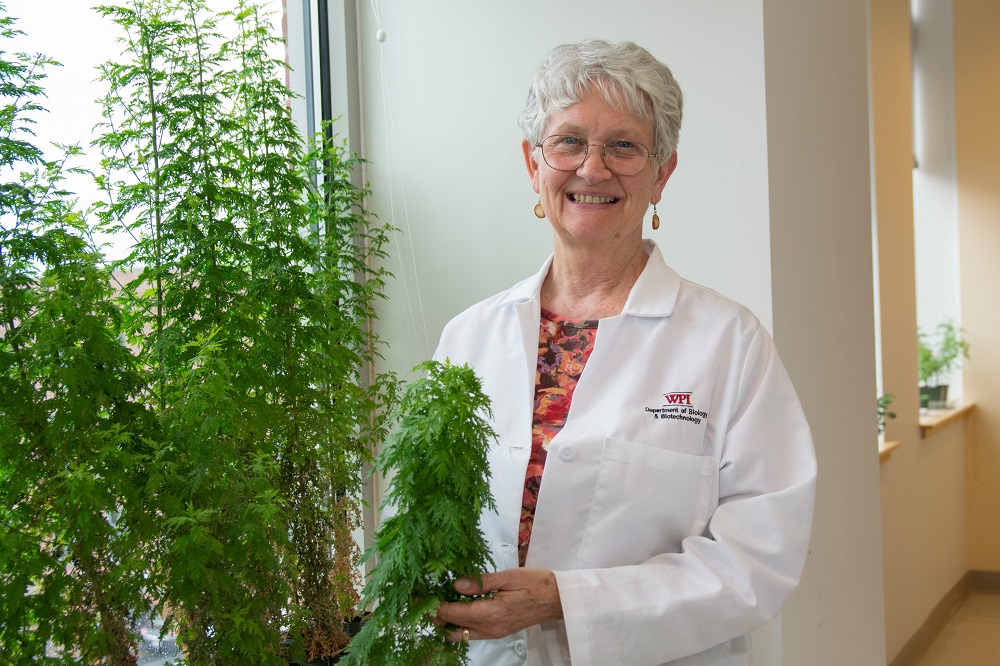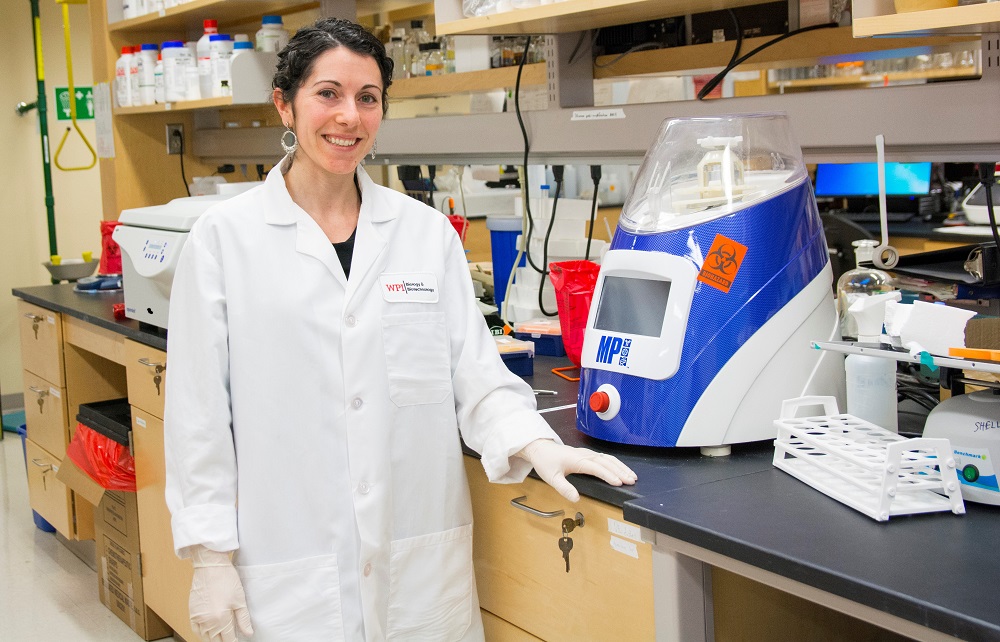With $756,000 in new awards from the National Institutes of Health (NIH) and the U.S. Department of Agriculture (USDA), researchers at the WPI Life Sciences and Bioengineering Center at Gateway Park will explore new aspects of research programs examining molecular processes related to nervous system development, bacterial infection, and plant production of a malaria drug.
Receiving new awards are:
Jose Arguello, PhD, professor of chemistry and biochemistry, who will receive a three-year, $295,000 award from the USDA to further his studies of the biochemical processes that bacteria use during infection to prevail over the host's defenses.
As they infect a host, the bacteria defend themselves by secreting complex molecules containing metals like zinc and copper that can overcome the host's protective efforts. In the new study, Arguello and his lab will focus on the beneficial relationship, or symbiosis, between legumes and the bacteria rhizobia. Legumes, which include soybeans, lentils and peanuts, are a major component of the global food supply. However, legumes can't absorb nitrogen directly from the environment. To capture this important nutrient, legumes depend on their symbiosis with rhizobia, which infect the plants' roots and establish structures called nodules where they take in and process nitrogen. In order to infect the plant, however, the bacteria must overcome the plant's defense system response. "This symbiotic relationship is vital for the world's food supply, but very little is known about the biochemical processes of this interaction," Arguello said. "So it is important that we understand the basic science involved."
Elizabeth Ryder, PhD, associate professor of biology and biotechnology, who will receive a three-year, $228,000 award from the NIH to advance her studies of how nerve cells develop from a fertilized egg, then migrate to the appropriate part of the organism's body to begin forming its nervous system.
In the new study, Ryder's lab will explore the interaction between two genes in the small roundworm C. elegans, which is a powerful research model for analyzing nervous system development. Earlier work by Ryder and others has shown that nerve cells migrate in the developing worm body guided by a chemical cue. When the cells locate in the proper place, they begin to extend axons to form the specific connections of the functioning nervous system. Ryder's team will analyze the role of two genes that appear to be involved in both the migration of nerve cells and the proper extension of axons. "When these genes are disrupted, the nervous system doesn't develop properly," Ryder said. "There are similar genes in humans, so we want to understand if, and how, these genes interact, so we can have a better understanding of the development process."
Pamela Weathers, PhD, professor of biology and biotechnology, who will receive three-year, $233,000 award from the NIH to continue her studies of the plant Artemisia annua, and the mechanisms the plant uses to produce a molecule called artemisinin, that is approved by the U.S. Food and Drug Administration to treat malaria.
In addition to its efficacy against malaria, several basic studies done by others have shown that artemisinin and its derivatives can inhibit the growth of many types of human cancer cells, in culture. A limiting factor in both the use and study of artemisinin, however, is that the plant produces a relatively small amount of the molecule and the final key steps in that biosynthesis pathway are unknown.
In the new study, the Weathers team will try to identify and characterize some of the molecular process they hypothesize may be involved in the final step of artemisinin production in the plant. "This is a very complex molecule, with tremendous potential as a human therapeutic," Weathers said. "We need to better understand how the plant produces artemisinin, especially the last step of biosynthesis that helps to reduce toxic oxygen in the plant by a still unknown mechanism. By improving our understanding of the biochemistry, we hope to then find ways to produce artemisinin in much greater quantities to meet the ever growing demand for the drug."
Eric Overstrom, head of WPI's Department of Biology and Biotechnology and director of the Life Sciences and Bioengineering Center, said the newly funded studies are examples of WPI's expanding national role in life sciences research aimed at solving real-world problems. "These are important basic science questions that need to be explored and answered, so we can apply the new knowledge in ways that will improve the human condition," he said.



